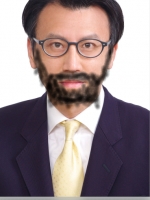Agencies and law firms representing photographers send out thousands of these letters annually. 每年代表攝影師之律師及經紀人都會寄出數千封像以上內容的信函。Some commentators contend they are hoping to make a quick buck from recipients who pay the requested amount to avoid further escalation, while others claim they are protecting the valuable intellectual property rights of photographers. Regardless of the motivation, use of a photograph without a license from the photographer is almost always copyright infringement and is largely an indefensible claim. Furthermore, depending on whether there is a valid copyright registration before the unauthorized use occurs, a prevailing plaintiff may be entitled to legal fees in addition to damages (read: possible big-dollar judgment).
It does not matter that the photo in the example above was of the company’s own product. Similarly, celebrities have been sued for using photographs of themselves when they did not have permission from the photographers who own the respective copyrights. Recent cases include:上開例子中的照片非公司所屬無所謂。同樣地,藝人未經攝影者同意利用其被拍之照片而被訴侵害著作權,近幾年的訟案包括以下:
These cases confirm that for all the benefits that social media can grant, it can also be a minefield for thorny legal claims, particularly with respect to the unlicensed use of images on social media posts, even if they are of you or your own product! After all, contrary to popular belief, just because someone posts a photo on the internet or to a public social media account does not make it public domain.
To avoid the risk of a copyright infringement claim, a license should be obtained for use of any third-party image. It is important to consider who owns the copyright and if the copyright owner’s consent is required to use the image. Also, one must consider the individual(s) who appear in the image and determine whether consent must also be obtained from said individual(s). Both may be required depending on the intended use of the photo. For example, if one is using a celebrity’s image to promote a business or any other good or service, permission from that celebrity must also be obtained even if permission from the photographer has already been obtained.
In some instances, use of a third-party photo may constitute fair use, and is thus not copyright infringement. Fair use usually arises in areas of news reporting and is rarely a successful defense when an image is used commercially. While there is no set criteria to establish fair use and case law varies widely, the Copyright Act sets out guidelines that can be evaluated: “(1) the purpose and character of the use, including whether such use is of a commercial nature or is for nonprofit educational purposes; (2) the nature of the copyrighted work; (3) the amount and substantiality of the portion used in relation to the copyrighted work as a whole; and (4) the effect of the use upon the potential market for or value of the copyrighted work.” Applying these criteria, it is difficult to see how using a photograph to promote a product or a business can be considered fair use.
Notwithstanding any fair use arguments that may exist, it is not a guaranteed defense and carries litigation risk, particularly since it is a fact-specific inquiry. For example, while the defendant in

蘇思鴻 律師